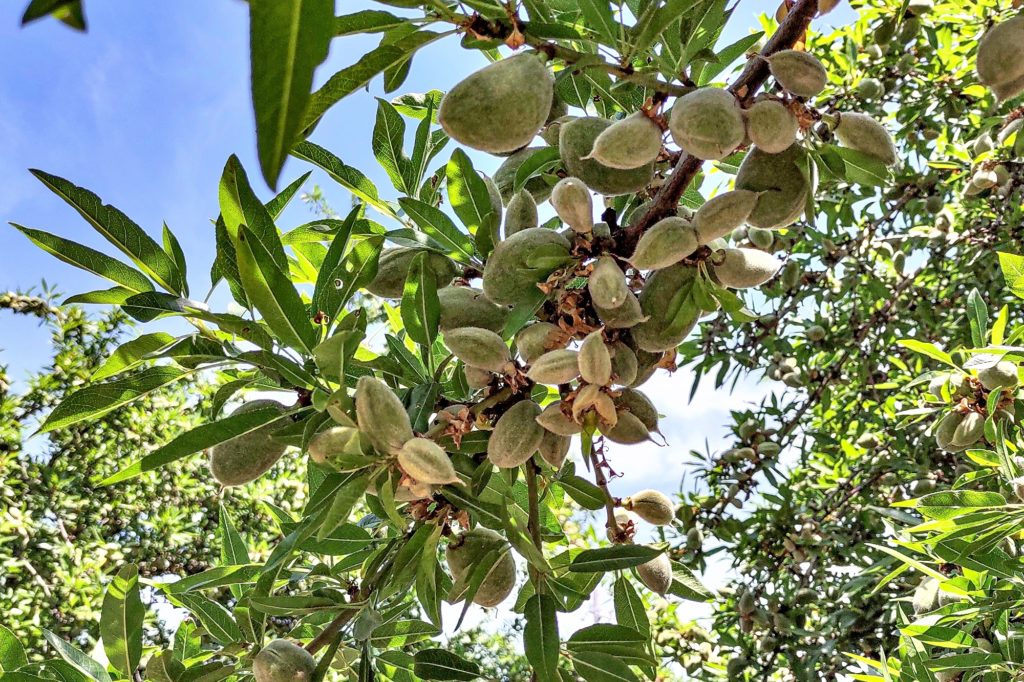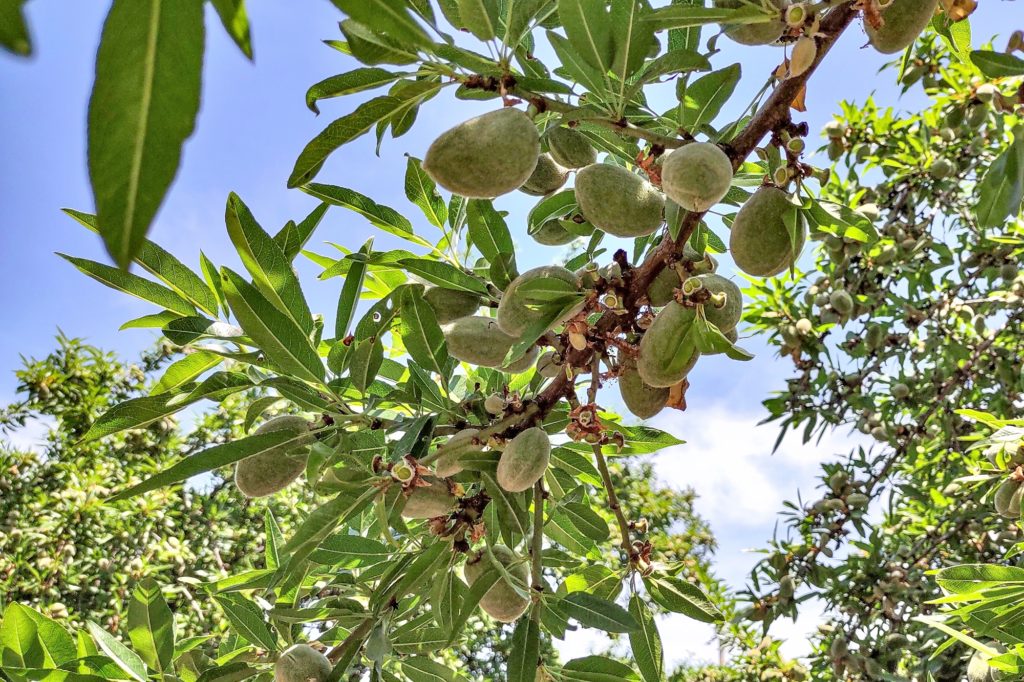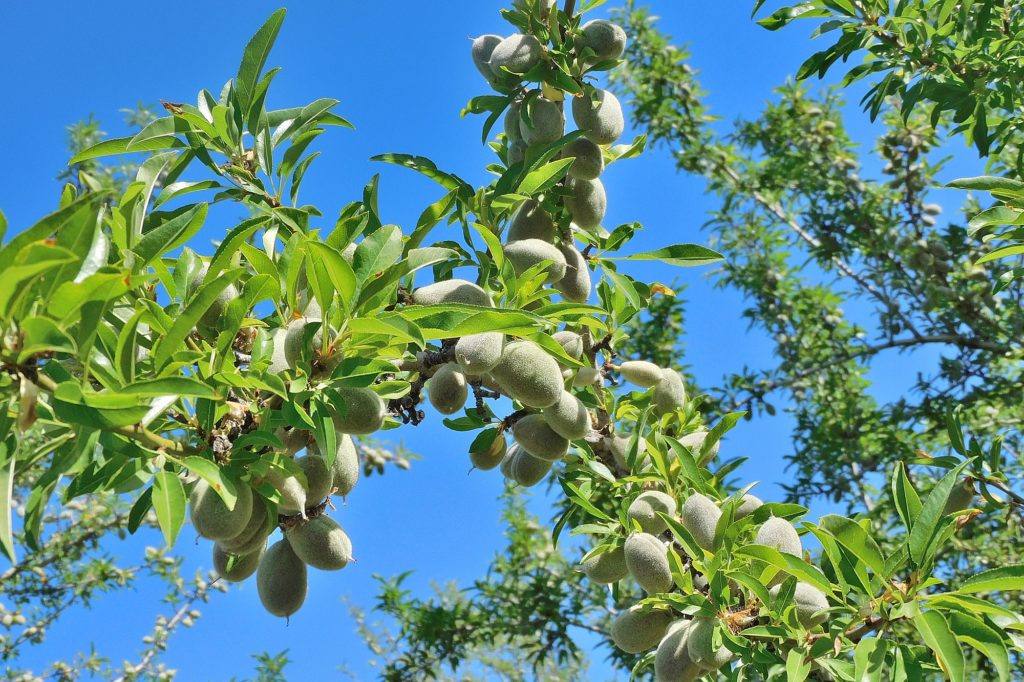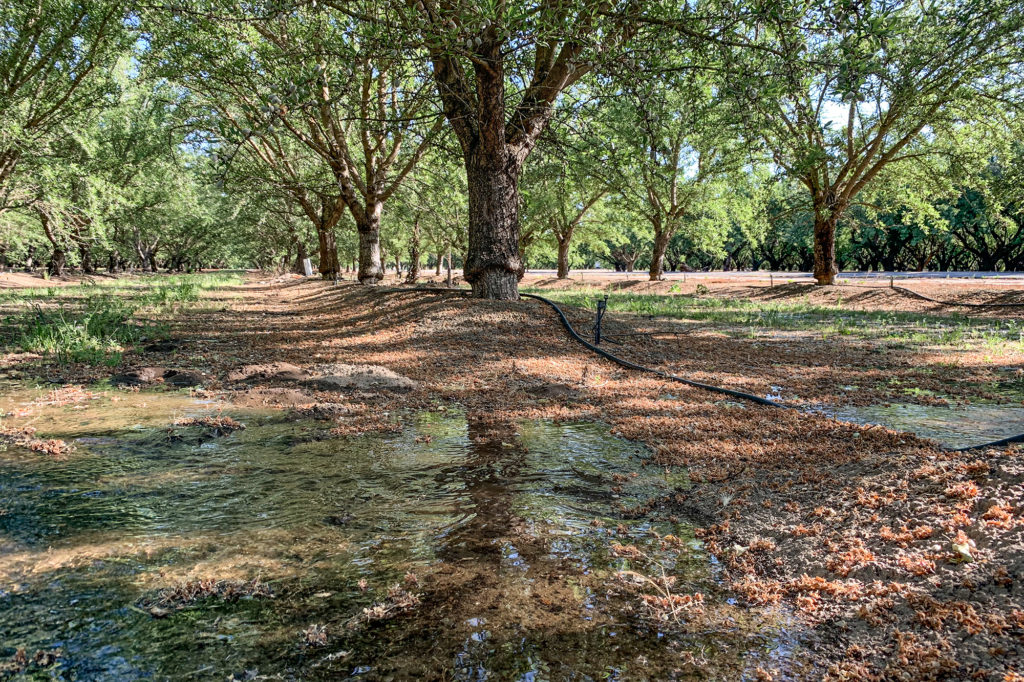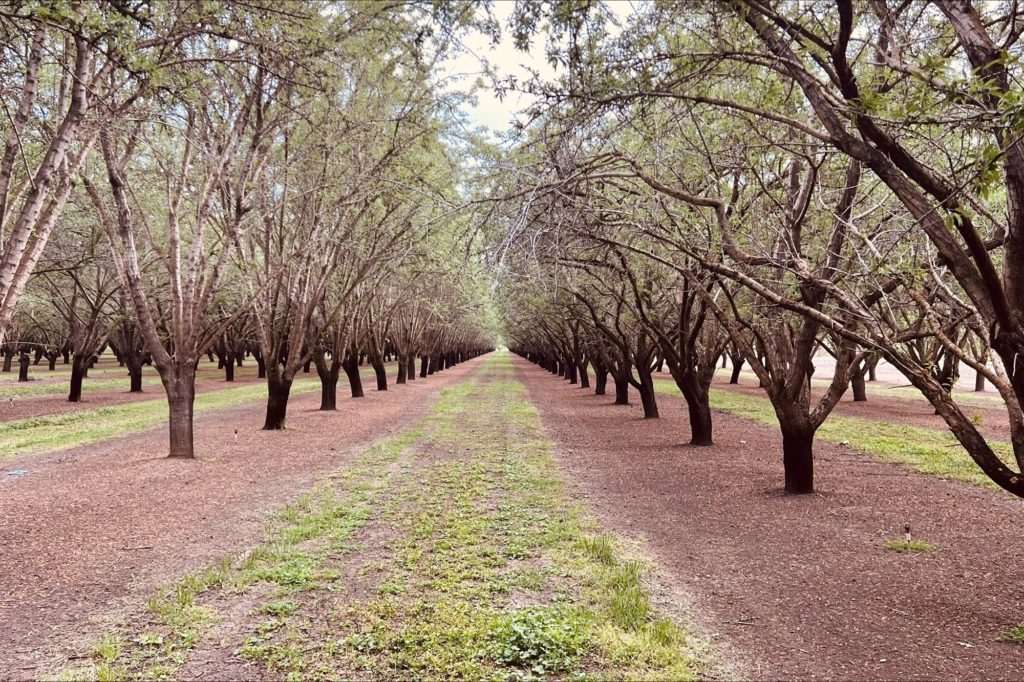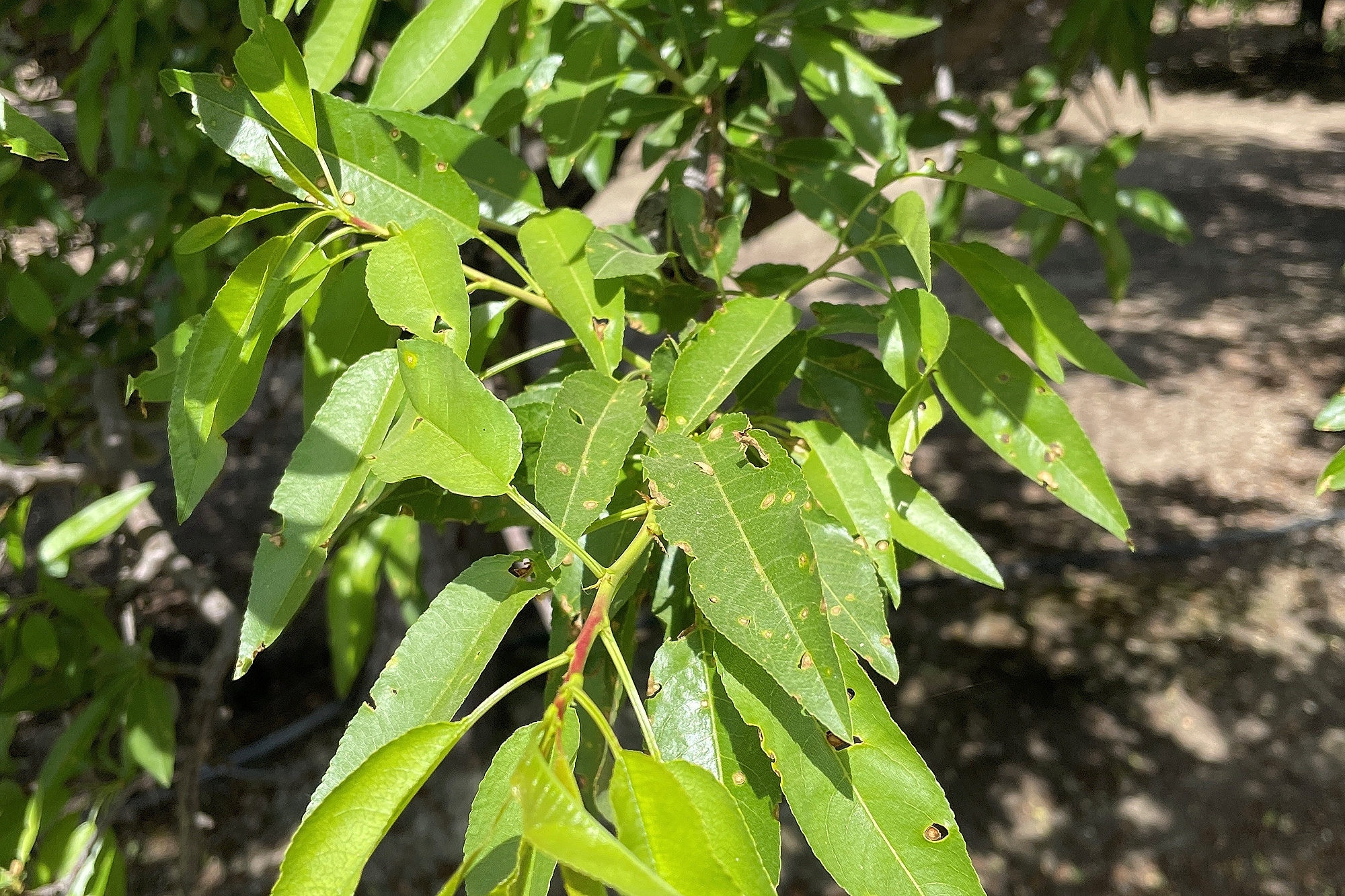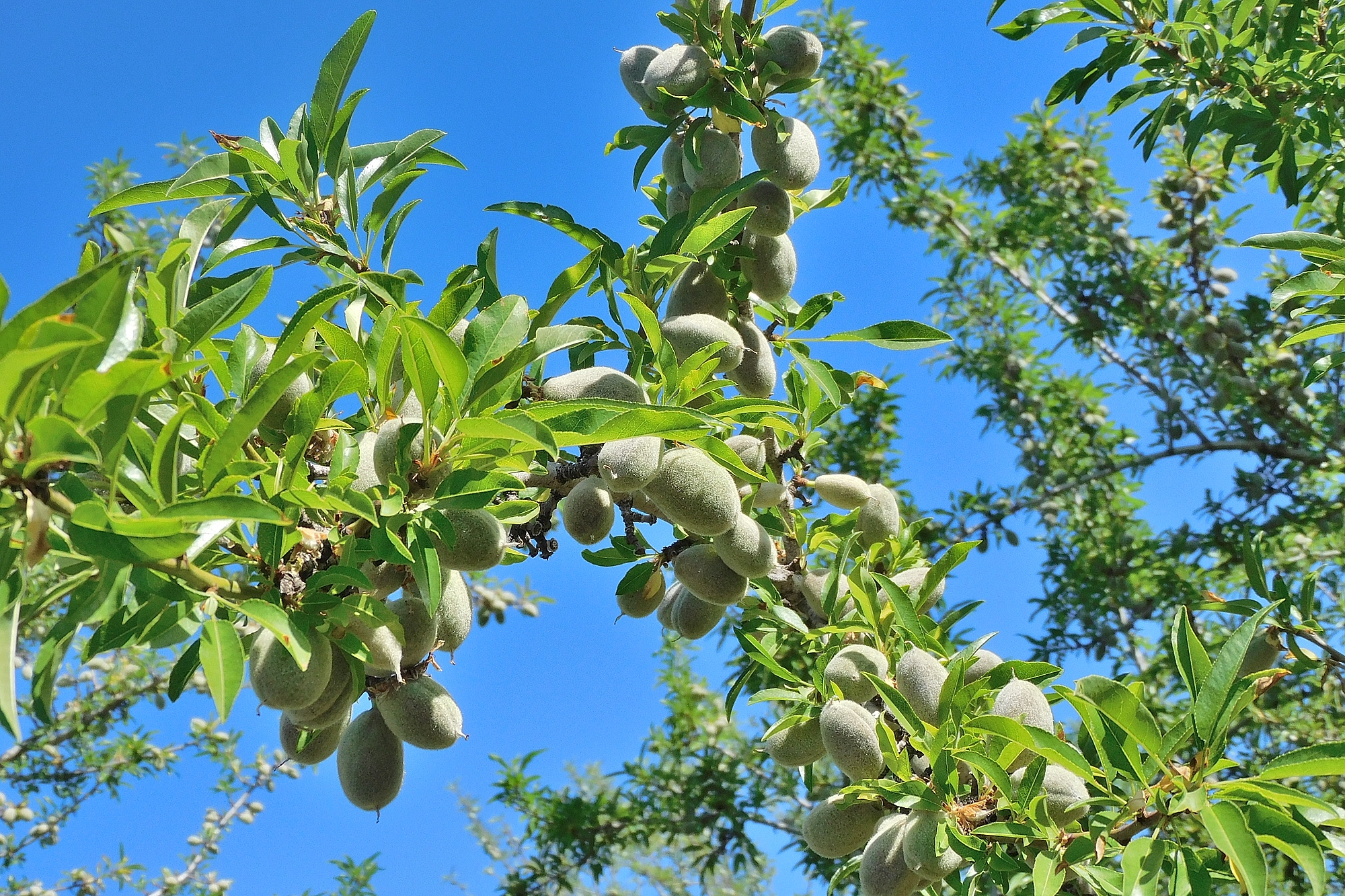
This report covers conditions and observations made between Monday, April 3, and Sunday April 30, 2023. The next scheduled report will be posted on Monday, May 29, 2023. In the event of any significant occurrences prior to that date, this site will be updated as soon as possible.
Following the extended period of wet and cold weather that dominated the 2023 bloom and post-bloom period, California’s weather finally turned to drier conditions during April. Brief scattered showers during the first week of the period produced the only precipitation during the month, with trace amounts to as much as one-third of an inch reported in the northern San Joaquin and Sacramento Valleys. Temperatures gradually warmed during April, transitioning from unseasonably cool readings recorded during the majority of the period to unseasonably warm in the final week of the month. Other than a brief excursion into the mid 80’s on April 10, daily maximum temperatures were widely reported between the upper 50’s and mid 70’s for the first three weeks of the period. Temperatures finally took a sudden, but brief turn to near summer-like levels in the final week of the month, reaching into the low to mid 90’s in all regions before dipping back to the lower and middle 80’s on the final day of the period. Morning lows followed a similar pattern, with readings dipping into the lower 30’s in the period’s open in days, providing a degree of concern, but failing to dip to damaging levels. Temperatures returned to safer values for the balance of the period, with readings reported predominately in the lower 40’s to lower 50’s.
The previous month’s wet weather continued to influence grower activities during April. Growers and their advisors spent much of the past few weeks evaluating their crops, seeking to determine their potential yields and resource requirements for the balance of the growing season. Growers and observers are reporting a highly variable crop sets in all growing regions, no doubt the result of the limited bee activity during the bloom, as well as the less-than-optimal post-bloom weather. Growers in the Sacramento Valley who endured the devastating freeze event in 2022 are reporting much better crop loads, albeit at less than historic averages. Those in the San Joaquin Valley are generally reporting lower apparent yields than experienced in 2022, with the greatest variation in older plantings. Many have noted that crop development is running well behind normal, possibly by as much as two weeks. This is most visible in the normal shedding process, where nuts that the tree is unable to support to maturity have been sequestered from nutrients and drop to the ground (see the photos accompanying this report). Observers have reported that this process is just beginning to become evident, while in most years sequestered nuts would have already been falling to the ground.
Many orchard tasks have been delayed by several weeks as growers waited for the soil to dry. The pale green to yellow foliage noted in our previous report has only perceptibly improved as daily temperatures increased. However, the unseasonably warm temperatures in the final days of the period have also acted as a double-edged sword. Observers have reported that some trees in the most adversely impacted orchards appear to be near death as compromised root systems are unable to keep up the amount of water moved through the foliage. Orchards under the greatest degree of stress will most certainly suffer an increased proportion of nut shedding.
Both the Federal Central Valley Project and the State Water Project have announced that agriculture has been allocated 100% of contracted water amounts this year, ensuring that growers will have adequate irrigation supplies for the year. Many growers with better drained soils began irrigating their orchards earlier in the period, running liquid fertilizer materials to provide nutrition for the developing crop. While local irrigation districts began their delivery season early in the month, most growers opted to delay irrigating until the latter half of the period, as they had more than adequate moisture within their orchard’s root zone. Growers and crop advisors have noted that the cold soil temperatures have complicated nutrient uptake, and many have also been making applications of foliar fertilizers in order to provide supplemental nutrition.
Growers have been working to reduce the amount of vegetation within their orchards, mowing down cover crops and spot-treating weed growth within the tree rows. In many cases, mowing was also delayed until the soil dried enough to support machinery. In a doubly ironic situation, growers have wanted to mow their cover crop down in order to ensure that the vegetation breaks down enough to not impede the harvest. However, the cover crop was also drawing excessive moisture from the soil, helping to avoid anaerobic conditions within the tree’s root zone.
Under matters of pest management, mummy removal for the control of Navel Orange Worm (NOW) was very difficult, if not impossible to accomplish this year due to the saturated soils. For those that were able to shake the mummy nuts, sweeping, where not impeded by vegetation or cover crops, and ultimate destruction using flail mowers was a prime focus over the past weeks. Destruction of the mummies and the NOW larvae they harbor before the adult moth emerges is the foundation of NOW control, and is intended to reduce the number of NOW moths laying eggs on the crop during the hull split later this summer. Some have noted the evidence of Plant Bug feeding and have treated accordingly. Plant Bugs, including Stink Bugs and Leaf-Footed Plant Bugs have become an increasing problem in recent years. The insects are difficult to observe, relegating growers to monitor for feeding damage on susceptible/preferred varieties.
Growers are also monitoring their orchards for signs of fungal disease. Like many orchard tasks, disease treatments have also been difficult to accomplish this year. Fortunately, the cool temperatures that accompanied the bloom-time storms were not supportive of fungal development and the windy conditions during and after the bloom worked to dry the nuts and foliage, as well as remove the floral jackets and petals from the trees as they dried. As a result, growers and Pest Control Advisors have noted little disease other than the occasional case of Shot Hole. Summer diseases like Scab and Rust are now moving into grower’s thoughts as treatments must be made prior to infection to be effective. Below ground fungal infections are another issue. The widely reported saturated soils are perfect for phytophthora root infections and some of previously noted tree death is no doubt the result of fungal infections compromising the root’s abilities to absorb moisture and nutrients.
Over the coming weeks, growers will continue with their regular orchard tasks. Irrigation, weed control, and pest monitoring will be prime functions. Orchard removal operations have resumed after being brought to a halt by the wet soils and growers will prepare their lands for the next planting.
By Mel Machado, Vice President of Member Relations
Photos By: Christine Ivory, Trent Voss, John Aja, Ben Goudie, Chris Miller, and Mel Machado

